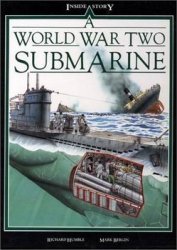On the international level, the UNESCO Draft Convention for the Protection of Underwater Cultural Heritage was adopted by the Plenary Session of the 31st General Conference in 2001, thus becoming UNESCO’s fourth heritage convention. The convention acknowledges the importance of UCH as an integral part of the cultural heritage of humanity and a particularly important element in the history of peoples, nations, and their relations with each other concerning their common heritage. It also emphasizes the importance of protecting and preserving the UCH, which it considers the responsibility of the government of each state. It notes the growing public interest and appreciation of UCH; the public’s right to enjoy the educational and recreational benefits of the UCH; and how public education will contribute to awareness, appreciation, and protection of that heritage. The convention further observes that UCH is threatened by unauthorized activities directed at it, and that there is a need for stronger measures to prevent such actions. The convention also notes that there is an increasing commercial exploitation of UCH aimed at the sale, acquisition, or barter of UCH.
As one can imagine, this was not an easy process; it had taken over a decade to reach this conclusion and was again a reaffirmation that society considers the protection of UCH more important than its exploitation. Prior to the UNESCO Draft Convention on Protection of Underwater Cultural Heritage, there was no international instrument to provide significant legal protection to UCH: shipwrecks, sunken cities, underwater cave paintings, and so forth. Although some nations possessed laws to provide protection in their own waters, others did not. This led to confusion about the rights of a nation to protect its cultural heritage, whether submerged in its own waters or another nation’s, or on the high seas. The main feature of the draft convention is that, among signatories, no activity directed at UCH may occur without a permit, no matter where the heritage is located. It provides guidance on the permitting process, including from which party the permit must be sought, depending on the location of the heritage. The draft convention covers all traces of human existence having a cultural, historical, or archaeological character which have been partially or totally underwater, periodically or continuously, for at least 100 years. It requires the consideration of on-site preservation of UCH as the first option before allowing any activities directed at it. Responsible nonintrusive access to observe or document on-site UCH ‘‘shall be encouraged to create public awareness, appreciation, and protection of the heritage... ’’. UCH may not be commercially exploited. Signatories have the exclusive right to regulate and authorize activities directed at UCH in their territorial sea and contiguous zone, and may enforce this right. On matters in a signatory’s exclusive economic zone (out to 200 nautical miles), however, the draft convention does not provide any new enforcement authority. There are several provisions making it clear that the convention must be interpreted consistent with international law, including the UN Convention on the Law of the Sea. Signatories must require their nationals to report any discovery of UCH (even if discovered in another signatory’s waters), and must prohibit them from engaging in activities directed at the heritage without a proper permit and to enforce those regulations against foreign-flag nationals and vessels, at least in the territorial sea and contiguous zone.




 World History
World History









